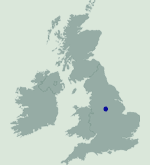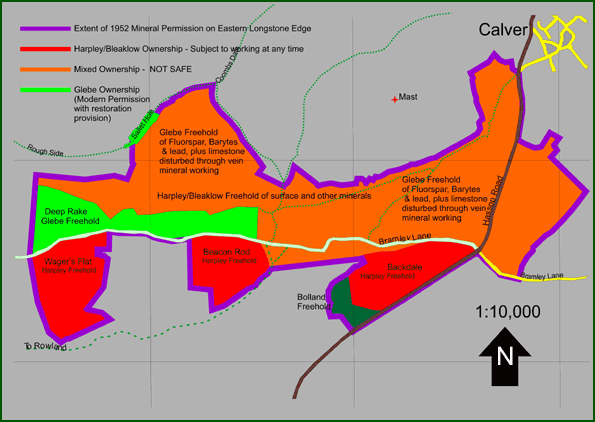The Problem at Longstone Edge

Longstone Edge is located in the Peak District National Park, in Derbyshire.
Simply put, the problem is permanent damage being caused by large-scale limestone aggregate removal from areas of Longstone Edge, situated in the centre of the Peak District National Park.
A lengthy legal battle to try to halt this carnage has recently been lost. The High Court has ruled that the owners may take as much limestone as they like, for the next 34 years.
Substantial parts of Longstone Edge are covered by an old Minerals Permission granted in 1952 (for 90 years), and written at a time when vein minerals were largely extracted by hand with men with barrows and pick-axes. The wording of the permission allows for “the winning and working of fluorspar and barytes and for the working of lead and any other minerals which are won in the course of working these minerals”. The permission includes no obligations for restoration of the damage caused.
The Peak District National Park Board has held that the Minerals Permission did not allow for the extraction of limestone, but the quarry owners maintained that it did cover limestone, and have been quarrying and selling large amounts. Unfortunately, the high court has recently ruled in favour of the owner, and quarrying, which had been on hold, has now resumed with gusto.
Vein minerals are bound up in the limestone so the excavation of a modest quantity of the host rock is unavoidable. Usually, this is stockpiled and used to restore the land to former levels by replacing the limestone after the extraction of the minerals, a traditional technique that is permitted under current planning guidelines. However, limestone aggregate itself is now a more valuable material than the Fluorspar Ore it contains, and is sold in far greater quantities than the vein minerals.
Bleaklow Industries is exploiting the original permission by operating a primarily limestone operation. Utilising the latest opencast quarrying techniques and equipment, 5 men can remove up to 20,000 tonnes of aggregate each month, with little regard for the vein minerals.
The operation is also in direct contravention of the spirit of all National Parks which exist to protect areas of great natural beauty, and threatened species and habitats. New or extended quarries need to demonstrate a special case for being in such sensitive locations, based primarily on the lack of alternative means of meeting a proven national need. Sadly, where old permissions exist, this is more difficult to control.
We believe that the national need for limestone should not be served by sites within the Peak District when there are plentiful supplies elsewhere.

The map above illustrates the four areas covered by the 1952 permission. Some areas have already seen significant extraction whilst others are under imminent threat:
Backdale Quarry

STATUS: Quarrying underway. Quarry being extended now.
Quarrying at Backdale has taken place for many years and actually pre-dates the 1952 permission. However, modern extraction techniques have significantly accelerated the process and the amount of destruction now visible is vast. Click here for more details about the problem at Backdale Quarry.
Wager's Flat

STATUS: Quarrying activities could resume at any time.
Until early 2006, Wager's Flat was untouched by quarrying activity. However, apparently prompted by enforcement action at Backdale in May 2006, investigative workings were seen soon after and quickly followed by full-scale quarrying in July 2006. Not being worked today, but quarrying could resume at any time. Click here for more details about the problem at Wager's Flat.
Beacon Rod

STATUS: No quarrying activity at the moment.
Currently, there is no quarrying activity at Beacon Rod but, since it falls within the scope of the 1952 Minerals Permission, the Save Longstone Edge Group has an interest in ensuring that this area remains untouched. Click here for more details about Beacon Rod.
Peak Pasture

STATUS: No quarrying activity at the moment.
This region, in the north of the Permission area, is considered to be at the lowest threat. It also overlaps with an EU designated Special Area of Conservation (SAC), Coombs Dale, so exploitation here would be particularly devastating for rare wildlife and habitats. Click here for more details about Peak Pasture.
The Materials and their Applications
The materials primarily being quarried at Longstone Edge are fluorspar and limestone, both of which are valued for their wide range of industrial applications. Click here for more details about the materials being extracted at Longstone Edge.

